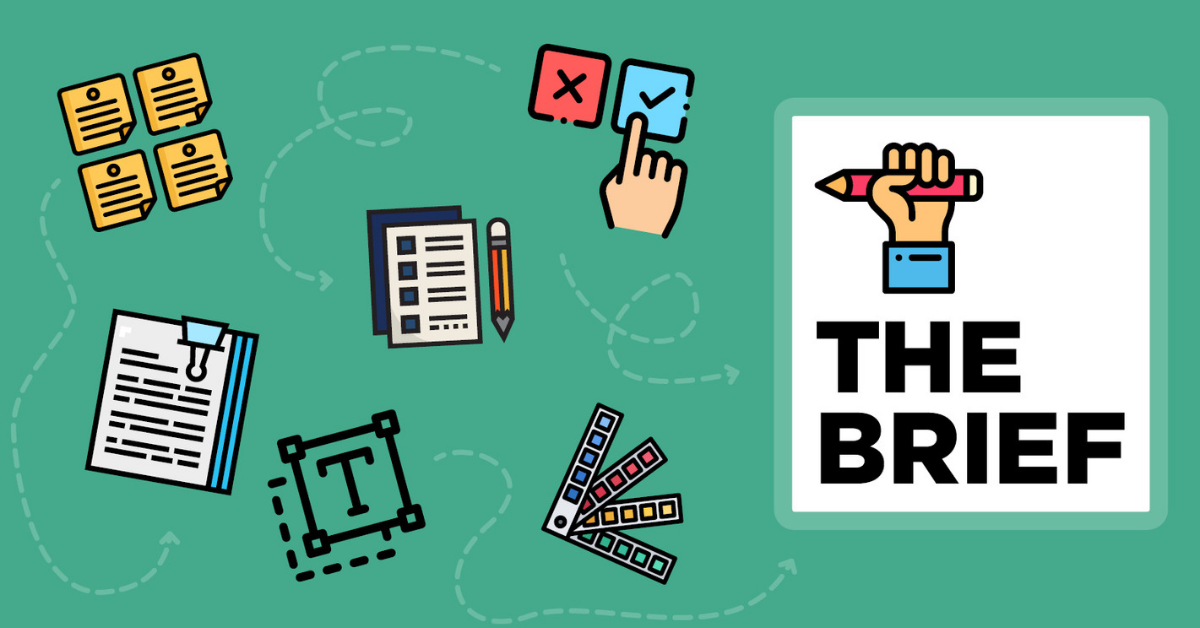“The Brief” 101 – how to write the best design brief.
When we ask for a design “brief”, what we really mean is we’re looking for a summary of the project you have in mind – the low-down, an explainer, your elevator pitch, a precis, some direction, your instructions. You have some design work that needs doing, and we can do it – once we know a bit more about what you want your end product to be.
We don’t expect you to know any marketing or design jargon, so the easiest way to ensure you are supplying a good brief is to think about the five Ws: the who, what, when, where, and why?
Who is your target audience?
Let’s say you need to promote a service your business provides and decide a flyer is the best way to do that. Who is the service for? Who are the main people you want to pick up the flyer and read it? Are they young hipsters who drink turmeric lattes, or are they more conservative middle-aged men with a passion for the GWS Giants? These examples may sound silly, but one of the best ways for a designer to get an idea of your target audience is if you describe them in terms of stereotypes or basic demographics like age, gender, income, location, job, hobbies, and even preferred coffee order.
The details you give us will depend on what your business or organisation is, so don’t get too bogged down in the nitty-gritty – just describe your target audience as a person and their key characteristics you think are most important.
What is it you are trying to achieve?
Notice we phrase the ‘what’ as ‘what you want to get out of the design project’, and not ‘what is the project?’ We want to know what your end goal is for this piece of design work, and from that we can help you decide the best way to go about it.
For example, you want to promote your plumbing business and make sure your elderly customers have your phone number handy. You might have in your head that you want to produce a flyer, but if you tell us your end goal, we can suggest that perhaps a more effective way to target this audience is with a fridge magnet.
When do you need it done by?
This is a basic requirement for any kind of brief. What is your timeframe for this design work? Is it an urgent message you want to get out? Or is it a long-term branding and identity development project? The timeframe will affect things like the type of output (especially for individual items, e.g.. a printed brochure vs digital ad), budget, and how often we’ll want to touch base with you.
Where will your audience interact with it?
The ‘where’ is closely related to the ‘what’. We want to know where you imagine your audience to see this design. Do you want something they can take home? Is it something to be positioned on your premises, like a restaurant menu? Is it something that should be public and recognised everywhere?
Of course, where people interact with the design depends on what the project is. A full brand identity design will span across all kinds of applications, while specific design tasks will have a more defined place, be it physical or digital.
Why is it important to you?
The ‘why’ is the thing that links all the other Ws together. Why do you need to promote that specific service? It might be because you are having a sale, or it has been particularly popular lately, and you want to capitalise on that momentum. Why do you want to target those people? Perhaps they are a segment of your audience you haven’t thought about much before and want to see if they are worth targeting. Why do you need it done in two weeks? If you have a specific event coming up like a conference or fair, we definitely need to know about it. Why do you want this design to fit in a handbag? Maybe it’s your business card we’re working on, and anything larger than a credit card would be rather inconvenient…
So, what do you do with these answers?
We need the brief written down so we can keep referring back to it and make sure our design delivers beyond your expectations. A design brief is like a contract between you and our designer – we’ll work off whatever is in the brief, and if you come back with additional requirements or more outputs, we can negotiate to find out what’s critical for the project. If your budget and timeline allow it, we can also expand the brief or spin off some of your requirements as a new project altogether. We’re pretty flexible in that way, and want to make sure you meet your design goals.
So, that’s it. The design brief, in brief. Let us know if you have a design requirement in mind and we are happy to chat with you to see how we can assist.
[/et_pb_text][et_pb_text _builder_version=”3.22.5″][/et_pb_text][/et_pb_column][/et_pb_row][/et_pb_section]
